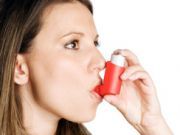Article
Women Seek More Treatment for Asthma Than Men
Author(s):
Women seek medical care more frequently than men after treatment for asthma in the emergency department, according to findings published in the Annals of Allergy, Asthma & Immunology.

Women seek medical care more frequently than men after treatment for asthma in the emergency department (ED), according to findings published in the Annals of Allergy, Asthma & Immunology.
Researchers from Maryland and Massachusetts collaborated to examine gender differences in patient characteristics in order to address the knowledge gap and risk of hospitalization in nearly 2,000 ED patients with acute asthma. Patients who sought treatment from 48 academic and community EDs across 23 states were observed between 2011 and 2012 in adults aged 18 years to 54.
“It’s important to note the men and women whose charts we studied had certain things in common,” said lead study author Rose Chasm, MD, in a press release. “Most had not been seen by an allergist, and had not used controller medications (inhaled corticosteroids) for their asthma. In addition, many were overweight and some were active smokers. A fairly high percentage did not have health insurance, although women had it more often than men. After adjusting for all those factors, we found that women were still 60 percent more likely to be hospitalized after being seen in an ED for acute asthma than men.”
Chronic asthma was the primary reason for the ED visit in a majority of the patients — 13 percent of women and 12 percent of men had been intubated at some point for asthma. About a third of both the men and the women had ever been hospitalized for asthma (36 percent and 32 percent, respectively), the researchers found. Over the past year, 16 percent of women and 13 percent of men had been hospitalized for asthma. The researchers believe these statistics indicate a high risk population with poorly controlled asthma, the statement continued.
“It’s long been known that after puberty, asthma is more common in women than men,” explained allergist James Sublett, MD, ACAAI president, in the statement. “Only 10 percent of the women in this study had been seen by an allergist in the last year. Many people aren’t aware that allergists are asthma specialists, and are among the best equipped experts to help keep asthma under control. Those who see an allergist and use controller medications find themselves in the ED much less often, and experience fewer hospitalizations related to their asthma.”
The authors believe that altered perception of airflow obstruction, potential influences of female sex hormones, differences in bronchial hyper responsiveness, and health behaviors are all potential contributing factors to the gender differences. But, they note, more studies on exactly which contributors have the most predictive value of ED visits are still needed.


